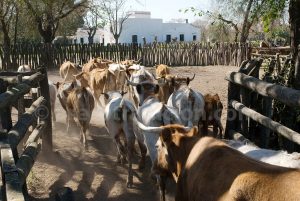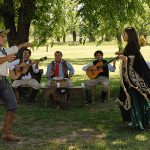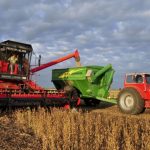History and characteristics of Argentine Estancias
The word estancia is very much used in Argentina, Uruguay, Paraguay and in southern Chile to mention a vast agricultural area, it is quite similar to the notion of ranch in North America.

In the rest of South America, the word “hacienda” is used or “fazenda” in Brazil.
The first estancias and chacras (smaller farms than estancias), appeared in Argentina in the 16th century, during the Spanish colonization. The conquistadores and explorers were rewarded, by the grace of royal concessions, with very large pieces of land called suertes (lucky). They accepted those lands as a reward, a “payment” for their efforts. From that word comes the term “pagos” commonly used nowadays by Argentinians to mention their place or town of origin. In San Antonio de Areco, for example, villagers like to talk about their Pagos de Areco, thus mentioning their native land.
Suertes of chacras were destined to agriculture, whereas suertes of estancias were specialized in breeding. Suertes of estancias had to measure at least half a league by one league and a half, which is about 2025 hectares of land. This area was calculated for between 800 and 1000 cows to feed on natural pastures, which is about 2 to 2.5 hectares per animal. But some estancias were as big as 250 000 hectares!
Originally, the estancias of the pampas were used to breed sheep for wool, but also cows for meat, fat and tallow. Tallow, a residual product obtained through the melting of animal fat, was used to make soap in order to clean, but also soften and waterproof the leather.

From generation to generation, those territories remained within the same families through inheritance, thus making Argentina a big land of great aristocratic landowners. Those aristocrates are still there today like the Echagüe, Andía, Fernández Montiel, Arias Montiel, Vera Mujica and Maciel families in the province of Santa Fe.
Those lands, recently occupied by the criollos right from the 18th century, were still inhabited by different Indian tribes like the Tehuelches, the Mapuches and the Araucanas. But Indians started fighting to defend their land so the estancieros had to resist their regular attacks, by building enormous pits and putting cannons all around their properties.
Throughout the colonial period, chacras were more numerous than estancias, but from 1820 things got reversed. Indeed, in those times large exporting and breeding farms developed in the country. By 1850, the estancieros had to acquire the whole rural area of Argentina, modernizing installations of barbed wire and corrals, buying machines to shear sheep, building stables …
From the end of the 19th century to the beginning of the 20th century, the phenomenon got reversed again. Through the sale of plots and the succession of inheritances, the lands were divided and the size of the estancias was reduced. In order to make as much profit as possible with their farms, those big landowners started hiring gauchos (Argentinian cowboys), giving them the opportunity to gradually settled down by allowing them to use their land in return for a share of the crops produced on their portion of land.
Since then, the estanciero is in charge of accouting and marketing, while the gaucho takes charge of the production and then receive a portion of the profits; half, one-third or one-quarter following the contracts. Also, the production of estancias becomes mixed, combining cereal production with cattle breeding in the pampas, while at the same time sheep farming is developing in Patagonia.
Nowadays, many estancias are still working all around Argentina. Specially around San Antonio de Areco, there are some of the oldest estancias of the country. Indeed, some of them opened their doors to travelers a few years ago, allowing them to discover the rich customs and traditions of the campo Argentino for one day or an overnight stay.






